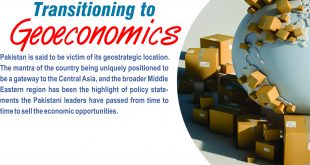By: Engr. Sarfraz Nawaz
Imran Khan’s Vision for the Future
It is a well-known fact that Pakistan is facing a housing crisis, especially in the urban areas of the country, due to a number of factors. The burgeoning population of the country has spurred rural to urban migration that is taking place on an unprecedented scale at present. In addition, Pakistan is fast losing its green spaces, curtailing the country’s capabilities to fight the menace of climate change. This scenario presents a bleak picture of the Pakistan of future as the state lacked planning to effectively deal with the intertwined issues of population growth, housing crisis and environmental degradation. However, recently, Prime Minister Imran Khan came up with a vision for the country’s future cities when he tweeted a picture of a Pakistani city in the future, featuring tall buildings that will serve as ‘vertical cities’, allowing for more green spaces.
Although individual family units have become the popular choice for residence among Pakistanis in recent years, the solution to accommodate the country’s burgeoning urban population lies in multi-family housing. It is in this context that Prime Minister Imran Khan recently banned the construction of housing schemes on agri lands in Punjab. Saying that parks and trees should be protected, the premier directed the Punjab government to ensure the protection of agricultural lands in the province. He further directed the relevant authorities not to allow any housing scheme on the cultivatable lands. In his tweet, PM Khan shared an image showing future look of Lahore’s Azadi Chowk and said, “My vision for our future cities: to allow buildings to rise vertically & allow for more green spaces as Pak is one of the most environmentally-threatened countries. Avoiding large sprawling built-up areas will also allow easier provision of amenities to our urban dwellers.” He further stated: “Also, we are in the process of making laws to allow buildings, built to international safety standards, to go as high as in other cities across the world.”
Pakistan is the seventh-most populous country in the world. According to the 2017 census, its population is 207.7 million and has grown at the rate of 2.4 percent per year in the intercensal period. Its urban population, on the other hand, has grown at the rate of 2.7 percent per year during the same period and is estimated at 75.5 million. This growing population is the key factor behind rural-to-urban migration that is taking place at an unprecedented scale. This densification of population in cities is causing severe damages to the environment. Pakistan is already among the top ten countries worst hit by climatic changes. Karachi, the commercial and economic hub of Pakistan, has faced severe heat waves during the recent years and the biggest reason sought for this is the elimination of green spaces from the city.
Currently, the expansion of urban centres, in the absence of land- use planning or its implementation, is swallowing up valuable agricultural land and damaging the ecology of the regions in which the cities are located, depleting water resources and polluting water bodies. It is also destroying geological formations, forests and natural drainage systems. This is causing flooding and bringing about a rise in temperature, creating heat island effects in the urban areas especially in the high-density high-rise informal settlements. If unchecked, these environmental hazards will increase. There is a need for new building design and technology which is affordable for low-income groups (especially with relation to insulation of external walls and roofs of buildings and planting trees) to deal with the effects of climate change.
So, amidst all this, it is vividly clear that it is time to embrace the new trend of high-rise living. It is especially so because in the recent past we have seen housing schemes mushrooming on fertile agricultural lands, causing thereby an irreparable loss to agriculture that is the mainstay of Pakistan’s economy. According to the practice in vogue in developed countries, only barren and useless land is utilised for residential purpose. Besides, skyscrapers resulting in vertical accommodation are adopted instead of horizontal residences. This considerably reduces space, accommodating more people on less area. These measures under proper planning can save precious fertile land from extinction.
In the end, it is apt to say that Pakistan’s housing crisis is so huge that it cannot be resolved through conventional means. What is required is to support the densification process by developing urban design plans for those areas where it is taking place.
With the problems of overpopulation and environmental destruction looming over us, we are desperate for a solution. Waiting too long to address this issue will undoubtably be disastrous and destructive. However, moving too fast without the proper foresight will likely prove equally damaging. The key to making the dream of the vertical city a reality is ensuring it is done right. It is vital to learn as much as we can to avoid possible problems. But we can only wait so long. Time is not our side, but even a few vertical cities could have a profoundly positive impact on our environment.
Why Vertical Housing?
Land is becoming scarce as the world’s population grows and environmental changes shrink the amount of livable space on Earth. Some creative thinkers say the solution is to build up – go for the vertical cities having high-rise buildings. A vertical city is an entire human habitat contained in a massive skyscraper. Vertical cities hold the key to solving overpopulation and overcrowding problems. Rather than destroying forests and swamps to build houses, shopping centres, and factories, they can be placed in a vertical tower, serving to preserve the environment. Sky-high construction enhances available living and working space, which reduces the impact of overpopulation. In a vertical city, people would live, work and go to school. Vertical towers also hold the key to preserving natural resources. These cities will save energy, support a growing population and preserve land for food production, nature and recreation. Over half the world’s population lives in urban areas today, according to the United Nations, and that figure is expected to rise to 66% by 2050. Vertical cities offer a space-saving way to house all those people.
Imagine commuting to work, running errands, catching a movie, and returning home at the end of the day without ever setting foot on a sidewalk. This kind of convenience makes cars and public transportation less necessary, reducing the automotive industry’s footprint on the environment. Kenneth King, coauthor of “Vertical City: A Solution for Sustainable Living,” predicts future vertical cities will be entirely self-sufficient. Vertical cities can, for example, theoretically provide countless unobstructed surfaces for solar panels. However, as Lloyd Alter points out, “The concept of the vertical city is fascinating and attractive to some people, and totally repulsive to others. Living in a vertical city might feel claustrophobic, especially if there are few excuses to leave the towers.”
By improving accessibility to nearby amenities, it limits the probability that people will seek out services and businesses outside of their immediate area. Alter writes that the “resilience of supertalls” also causes concern. Developers in a rush to build might skirt safety precautions (in 2015, over 1,000 high-rises in Delhi, India, flunked fire safety regulations). Plus, if a fire breaks out, it is likely that water hoses would not reach the flames. Moreover, in the event of an earthquake, a collapse could wipe out tens of thousands of lives.
 Jahangir's World Times First Comprehensive Magazine for students/teachers of competitive exams and general readers as well.
Jahangir's World Times First Comprehensive Magazine for students/teachers of competitive exams and general readers as well.



